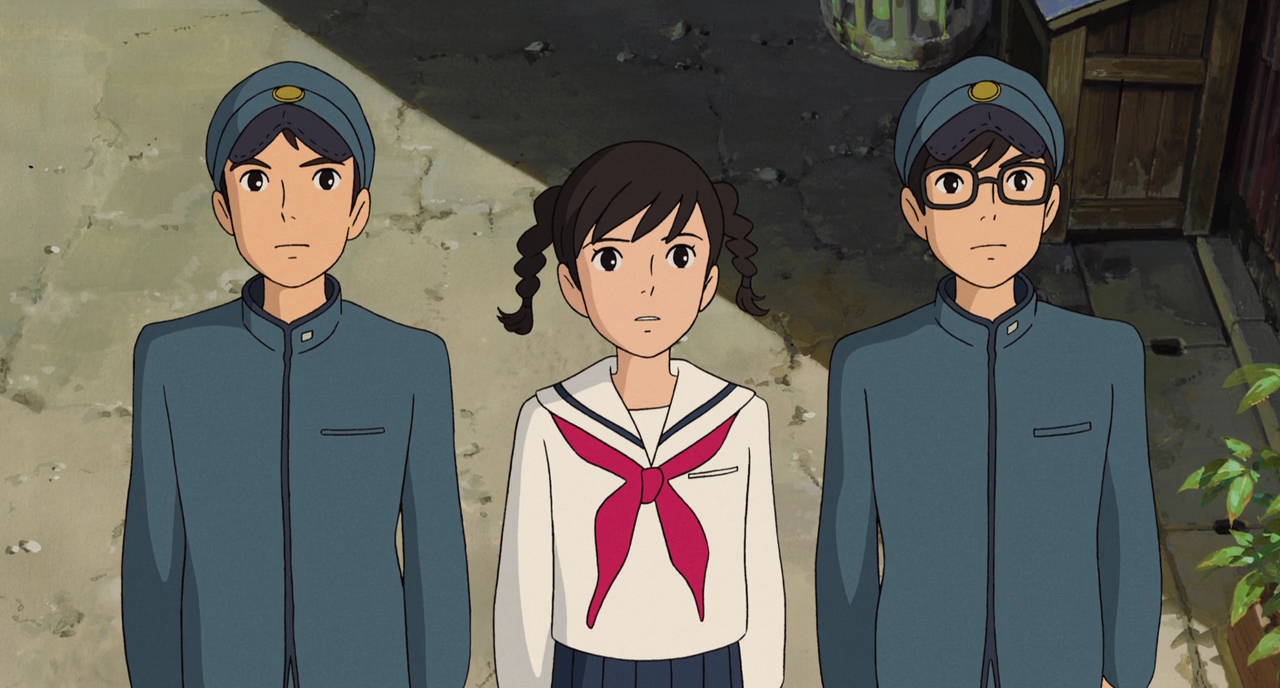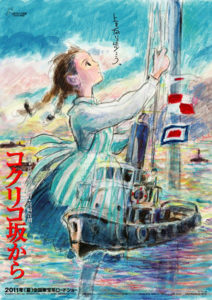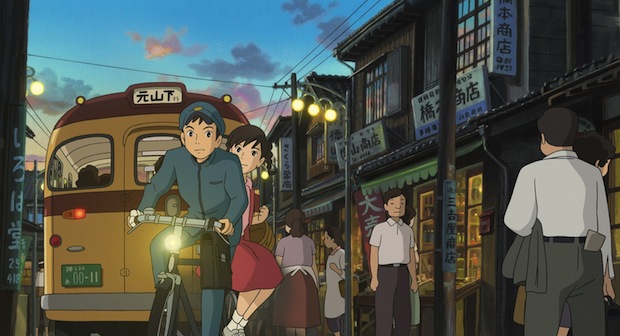Miyazaki junior’s second feature is gentle Ghibli, and instead of taking us to a magic faraway place, it simply draws us into the past.
[stextbox id=”grey” caption=”From Up on Poppy Hill (2011)” float=”true” align=”right” width=”200″]
Director: Gorō Miyazaki
Writers: Hayao Miyazaki, Keiko Niwa
Runtime: 91 minutes
Starring: Masami Nagasawa, Jun’ichi Okada
Distributor: Toho
Festival: Reel Anime 2012
Country: Japan
Rating (?): Better Than Average Bear (★★★½)
Goro Miyazaki, the son of Studio Ghibli founder Hayao Miyazaki, was a reluctant filmmaker. A landscape designer by trade, his debut film Tales from Earthsea awarded him Japan’s Bunshun Raspberry Award for “Worst Director”, with the film itself receiving the award for “Worst Movie” in 2006. That film also caused friction between father and son, with Hayao believing that Goro did not have the experience for a feature film. However, only a few short years later, Goro has returned to the director’s chair with a script co-written by his father and Keiko Niwa.
Based on the serialised Japanese comic of the same name, originally drawn by Chizuru Takahashi and written by Tetsurō Sayama, Goro’s latest comes to us by way of a 2012 Japan Academy Prize for Best Animation of the Year. How times change. In fact, change is one of the themes of From Up on Poppy Hill (コクリコ坂から Kokuriko-zaka kara, literally “From Coquelicot Hill”), and although it is a period piece, it comes with strong parallels with the events of the last year.
Set in Yokohama in 1963, the year before the Olympics came to Tokyo, 16 year-old girl Umi (Masami Nagasawa) lives on a house on the top of Kokuriko hill. Every morning, she raises a flag to the ocean that means “I pray for safe voyages”. 17 year-old boy, Shun (Jun’ichi Okada) sees the flag every morning as he rides a tugboat to school. Against the backdrop of everybody wanting to tear down the old and replace it with the new, including the school Culture Club nicknamed Quartier Latin, the two are destined to meet and change their lives forever.
Although the rolling blackouts following the 2011 Japanese Tōhoku earthquake and tsunami impacted the speed of production, From Up on Poppy Hill‘s nostalgic outlook is exactly what the country needed on the road to recovery. Like the feel-good Always: Sunset on Third Street 3, set just prior to the 1964 Tokyo Olympics, Miyazaki takes us back to a time when Japan was going through great economic and social change. The horrors of the Second World War were behind them, and rapid changes in society saw Japan on the cusp of becoming a truly global nation. Yet this is merely a backdrop for Miyazaki’s story, which is a very simple nostalgia piece that shares a stylistic and tonal vibe with Ghibli’s own Ocean Waves.
There are no giant fantastical elements at play here, and the animation style is in keeping with this. The simple and pretty backgrounds and character animation serve the story well, although it is certainly not as dynamic as other recent Ghibli films, and the pacing is somewhat off in the first half of the film. Miyazaki has tackled a much smaller story for his second crack at the plate, and the landscaper in him occasionally likes to enjoy the scenery a little too much. The story gets pulled in two directions at one point, and there is a predictability to the ending, but this is neither here nor there. With From Up on Poppy Hill, the younger Miyazaki shows that he is finding his voice, and sometimes you have to look back to go forward.
From Up on Poppy Hill was released in Japan on 16 July 2011, and on DVD and Blu-ray on 20 June 2012. It screened in Australia in September 2012 as part of Reel Anime. It is planned for an US released in March 2013. Look out for a limited release at cinemas in Australia from Madman.







